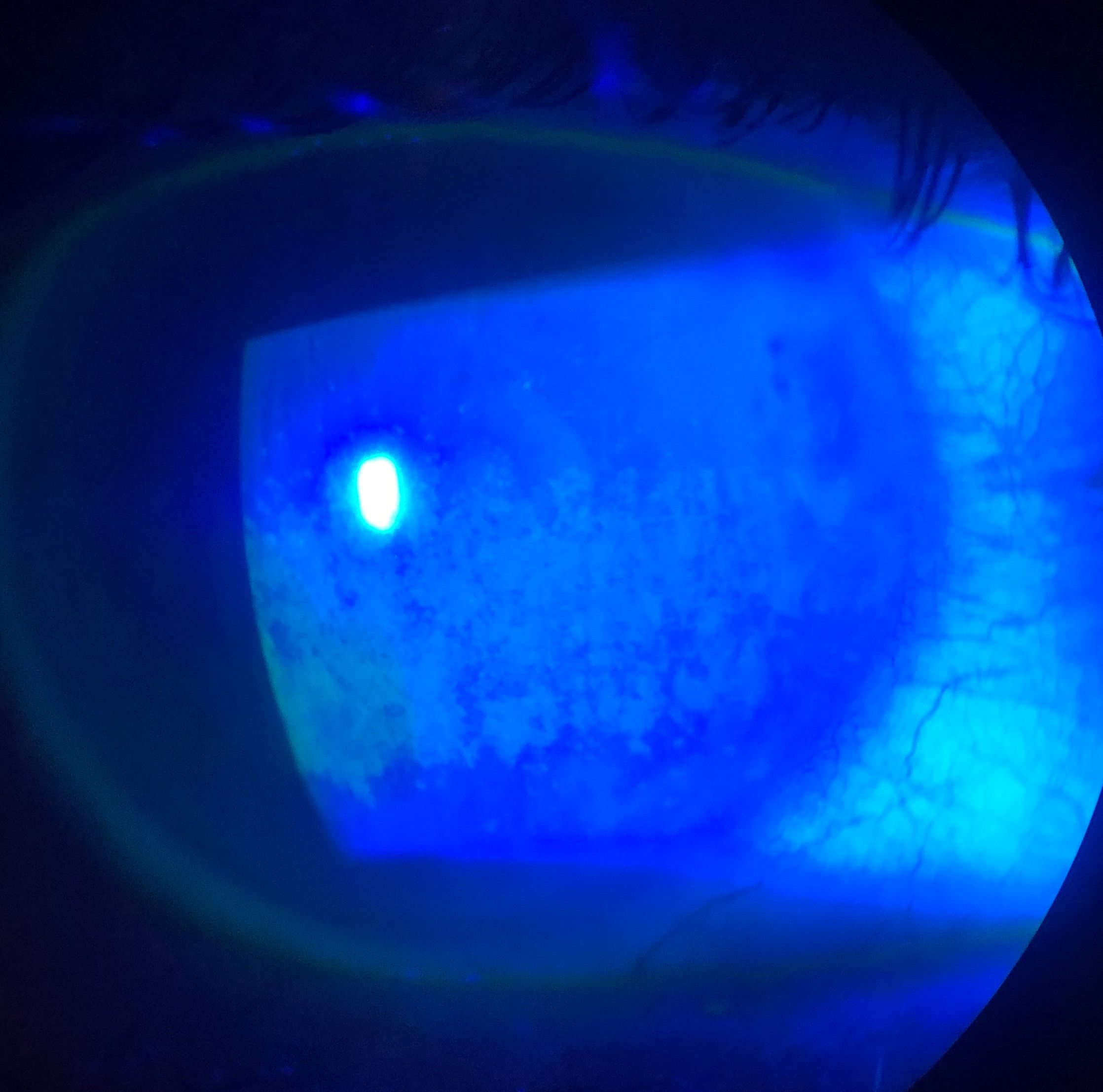Common systemic conditions associated with dry eye disease

Jade Coats, OD. In practice at McDonald Eye Associates in North West Arkansas.

More than 30 million people suffer from dry eye syndrome (DES), but less than 1 million are actually receiving treatment.1
Pinpointing the exact cause of dry eyes can sometimes be difficult because the condition is often multifactorial with several contributing factors leading to intermittent blur, fluctuations in vision, and stinging or watery eyes.
Related: Dry eye signs may signal risk for diabetic foot ulcers
Common systemic and autoimmune diseases have been found to be associated with an increased risk of dry eye disease; therefore, it is especially important to be familiar with these systemic conditions that contribute to aqueous deficiency and/or evaporative dry eye disease.
Dry eye disease is known to be multifactorial, with inflammation being a key contributing factor to the vicious dry eye cycle.1 Most commonly, evaporative dry eye causes tear hyperosmolarity which destroys the ocular surface cells. This damage causes an inflammatory response, leading to chronic dysfunction of the tear secretion, further increasing the tear osmolarity. In contrast, aqueous deficient dry eye involves inflammation attacking and damaging the lacrimal glands causing a decrease in tear production.
*Important to note: Although the prevalence of DES is more common in women and may increase with age, dry eye symptoms affects people of all ages.1
Click here to see a dry eye video related to this article (video A)
Click here to see a dry eye video related to this article (video B)
Related: Blood-derived serum tears go beyond conventional therapy
Diabetes
The Centers for Disease Control (CDC) reports more than 30 million Americans, or approximately 10 percent of the United States’ (U.S.) population, has diabetes mellitus (DM), with another 7.2 million likely undiagnosed.2 Both type 1 and type 2 diabetes affect the way the body regulates glucose, and it has been documented that the incidence of dry eye is correlated with increased levels of glycated hemoglobin (HbA1c).3
Related: How IPL can help dry eye
The Beaver Dam Eye Study identifies diabetes as one of the leading systemic risk factors for dry eye with nearly 20 percent of participants between ages 43 and 86 exhibiting dry eye symptoms.1 In another study, insulin dependent diabetics demonstrated significantly decreased reflex tearing and increased conjunctival surface disease.4
For patients with DM, it is important to remember that the decline in tear film function has been shown to be more severe in patients with advanced diabetic retinopathy3. Knowing this, it is important to recognize dry eye disease and its role in overall visual function for patients with diabetes mellitus.
Click here to see a dry eye video related to this article (video A)
Click here to see a dry eye video related to this article (video B)
Related: How to incorporate nutrition into dry eye practice
Autoimmune disease: Rheumatoid arthritis (RA), Lupus, and Sjögren’s syndrome (SS).
Rheumatoid arthritis is characterized as a chronic autoimmune disease that primarily targets the synovial tissues, damaging the joints of the body. Research has shown that chronic systemic inflammation has been identified as causing eye complications such keratoconjunctivitis sicca in up to 70 percent of RA patients.5 Interestingly, in that same study, only 12 percent of patients were currently being treated for ocular surface disease.5
Related: Surgical update 2019: What every OD needs to know
Systemic lupus erythematous (SLE) is another chronic autoimmune disease that causes inflammation of various organs including skin, heart, joints, blood vessels, liver, kidney, and the eyes. It is thought that a higher concentration of cytokines and inflammatory markers in the tears of SLE patients may cause aqueous deficient dry eye disease. The prevalence of keratoconjunctivitis sicca symptoms in SLE has also been reported between 28 and 36 percent.6
Sjögren’s syndrome (SS) is a chronic autoimmune disease that attacks exocrine glands such as the salivary and lacrimal glands.7 With likely many people undiagnosed, SS affects nearly 4 million Americans with 10 percent of SS patients suffering from significant aqueous deficient dry eye disease.7
With pharmaceutical options including Restasis (0.05% cyclosporine, Allergan), Cequa (0.09% cyclosporin, Sun Pharmaceutical), and Xiidra (5% lifitegrast, Novartis), optometrists now have multiple options to treat the signs and symptoms of dry eye disease by decreasing the inflammatory response and breaking down the dry eye cycle.
Click here to see a dry eye video related to this article (video A)
Click here to see a dry eye video related to this article (video B)
Related: Offer IPL as a treatment for MGD and dry eye disease
Thyroid-related disorders: Grave’s disease, Hashimoto’s thyroiditis
Thyroid disease has been shown to be associated with increased risk of dry eye, suggesting that hormone dysfunction may play a role in early onset of symptoms.1 Both Grave’s disease (hyperthyroidism) and Hashimoto’s disease (hypothyroidism) are associated with an abnormal production of thyroid hormone and can cause a combination of both aqueous deficient and evaporative dry eye disease.
Related: Recognize signs and treatment for patients with persistent PSP
Nearly 50 percent of patients affected by Graves’ disease suffer from thyroid-associated ophthalmopathy (TAO), a progressive eye disorder that is linked to an inflammatory response of the orbital tissues. TAO ranges from no signs or symptoms to severe vision loss, and may also be characterized by lagophthalmos, exophthalmos, restrictive myopathy, proptosis, and diplopia. Most commonly, a classic presentation of eyelid retraction and proptosis occurs in in 80 to 90 percent of patients with Graves’ disease.8
Similarly with Hashimoto’s thyroiditis, proptosis is found to be a risk factor supporting previous research that found an increased palpebral fissure width might lead to ocular surface drying and tear film hyperosmolarity.8 Due to the increased ocular surface exposure caused by proptosis and eyelid retraction, a lubricating ointment at night can be recommended for overnight use to ensure proper eyelid seal.
Click here to see a dry eye video related to this article (video A)
Click here to see a dry eye video related to this article (video B)
Related: Dry eye signs may signal risk for diabetic foot ulcers
Sleep disorder: Obstructive sleep apnea (OSA)
Obstructive sleep apnea affects more than 18 million Americans and is a life-threatening sleep disorder causing decreased blood oxygen levels. With nearly one in four men and one in 10 women affected by interrupted breathing during sleep, it is important to identify undiagnosed patients who may exhibit other ocular manifestations of sleep apnea.9
Related: New guidelines in OSD evaluation before surgery
In addition to evaporative dry eye symptoms, one prospective study of sleep apnea patients referred for a sleep study found that over 25 percent increasing to 40 percent among those with severe sleep apnea, also suffered from floppy eyelid syndrome.9
The common treatment option for sleep apnea includes the use of a continuous positional airway pressure (CPAP). Nighttime ointment can be helpful for OSA patients to ensure that the eyes are protected and lubricated, even if a mask leak exposes the cornea to constant air.
Click here to see a dry eye video related to this article (video A)
Click here to see a dry eye video related to this article (video B)
Related: Overlooked causes of dry eye
Allergies and asthma
Patients with allergies and asthma have been reported to have a higher incidence of dry eye disease. It is important to note that many patients suffering from allergic co-morbidities may be treating their symptoms with an over-the-counter oral or topical antihistamine, unaware that it could be contributing to their DED. Medications such as antihistamines, leukotriene receptor antagonists, and inhaled corticosteroids used in the treatment of asthma and allergies have been shown to exhibit adverse effects such as tear film dysfunction.10
Related: Why OAB should be considered before cataract removal
Research has also indicated an association of risk factors for dry eye disease in patients with other systemic disease such as osteoporosis, migraine headaches, and anxiety/depression.1
In conclusion, systemic disease and autoimmune conditions are frequently associated with an increased risk of dry eye syndrome. These patients are often affected by a combination of both evaporative and aqueous deficient dry eye; therefore, cognizance of a patient’s entire health history can help lead ODs to the root cause of chronic DES.
Asking a few extra questions during an eye exam regarding the status of a patient’s systemic conditions, and educating about their risk for dry eye, has been helpful in combating this disease by setting up realistic expectations of a treatment plan to control and maintain comfort.
Click here to see a dry eye video related to this article (video A)
Click here to see a dry eye video related to this article (video B)
More by Dr. Coats: Minimize symptoms of dry eye disease in refractive surgery patients
References:
1. Paulsen AJ, Cruickshanks KJ, Fischer ME, et al. Dry eye in the beaver dam offspring study: prevalence, risk factors, and health-related quality of life. Am J Ophthalmol. 2014;157(4): 799–806.
2. Centers for Disease Control and Prevention. National Diabetes Statistics Report, 2017. Atlanta, GA: Centers for Disease Control and Prevention, U.S. Dept. of Health and Human Services; 2017.
3. Yu L, Chen X, Qin G, Xie H, Lv P. Tear Film function in type 2 diabetic patients with retinopathy. Ophthalmologica. 2008;222(4):284-91.
4. Goebbels M. Tear secretion and tear film function in insulin dependent diabetics. Br J Ophthalmol. 2000;84(1):19–21.
5. Piper H, Douglas KM, Treharne GJ, Mitton DL, Haider S, Kitas GD. Prevalence and predictors of ocular manifestations of RA: is there a need for routine screening? Musculoskeletal Care. 2007 Jun;5(2):102-17.
6. Resch MD, Marsovszky L, Németh J, Bocskai M, Kovács L, Balog A. Dry eye and corneal langerhans cells in systemic lupus erythematosus. J Ophthalmol. 2015;2015:543835.
7. Coursey TG, de Paiva CS. Managing Sjögren's Syndrome and non-Sjögren Syndrome dry eye with anti-inflammatory therapy. Clin Ophthalmol. 2014 Aug 4;8:1447–58.
8. Selter JH, Gire AI, Sikder S. The relationship between Graves' ophthalmopathy and dry eye syndrome. Clin Ophthalmol. 2014 Dec 31;9:57–62.
9. Santos M, Hofmann RJ. Ocular Manifestations of Obstructive Sleep Apnea. J Clin Sleep Med. 2017;13(11):1345–1348.
10. Bielory L. Ocular toxicity of systemic asthma and allergy treatments. Curr Allergy Asthma Rep. 2006 Jul;6(4):299-305.
Newsletter
Want more insights like this? Subscribe to Optometry Times and get clinical pearls and practice tips delivered straight to your inbox.